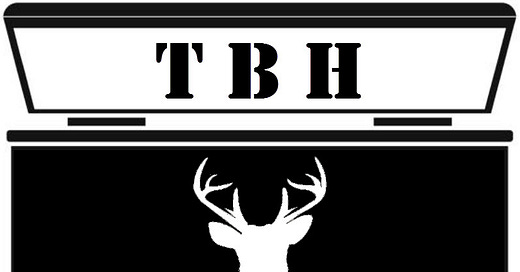The final ‘low and slow’ dish is one that is probably my most favorite. It’s what I serve for special occasions or when guests come over for dinner. It’s the filet mignon of venison – backstrap.
Growing up in a hunting family who took their deer to the butcher for processing, I was unaware of the backstrap. Once I started butchering my own deer, I was opened to the world of specific cuts of meat. To be honest, venison backstrap in and of itself is reason to learn how to butcher your own deer, or at least as your processor/butcher to save the backstrap for you. They are, by far, the most tender cuts of meat on any venison.
Since these cuts are tender, you may think that cooking them ‘low and slow’ may be counterintuitive. Why not just crank up the grill like I would with a nice beef steak? You certainly can do that, but there is one major difference between deer and cows – fat. Venison is one of the leanest red meats available (which makes sense when you think about all the running and general ‘staying alive’ that deer do compared to cows). Since it’s lean, it is very easy to dry out. Enter your secret weapon: bacon. A good peppercorn bacon wrapped around the backstrap will add flavor while simultaneously keep the meat from drying out. You don’t want to douse the meat in bacon fat; instead, think of the bacon as a buffer to keep the juice in the backstrap.
Another note, this one on reverse searing. Reverse searing simply means the last step you take when cooking the meat is to sear the cut (as opposed to doing it first). The difference that I had to learn the hard way between reverse searing beef steak and reverse searing backstrap is to keep the backstrap whole as long as possible. I generally cut my backstrap into third, just small enough to fit on the grill.
I smoke the meat until the desired temperature (generally 10 degrees below my desired temperature. You can check out any meat ‘doneness’ chart on the internet to determine the correct finishing temp for your cut). Side note: a good meat thermometer is a must for this recipe. Once we get close to the temp, I get a cast iron skillet screaming hot on the oven. Once the meat reaches that temp, I use a sharp knife to cut off a cutlet in the desired size and immediately add it to the hot skillet with some butter. The goal is to preserve as much of the juice as possible. Sear it on each non-bacon side for 3-5 minutes to finish the sear.
Cook time – 2 hours (prep time 10 minutes)
Ingredients:
· 1 stick of butter
· Your favorite steak seasoning
· 1 venison backstrap, cut into large pieces that will fit on the grill
· Enough bacon strips to completely wrap around your backstrap (generally 1 pound of bacon will cover a whole deer back strap but this will vary depending on the bacon and backstrap sizes)
Recipe
1. Heat smoker or oven to 250 degrees
2. Season the backstrap
3. Wrap the bacon around the backstrap so it covers all sections. Use toothpicks to hold bacon in place if necessary
4. Monitor temperature. When meat reaches desired temp minus twenty degrees, begin heating a cast iron skillet on high heat.
5. Once meat temp reaches desired temp minus ten degrees, add butter to skillet and remove backstrap from smoker/oven.
6. Slice backstrap to desired cutlet size (width of the bacon strips is generally a good rule of thumb) and immediately add to the skillet with the non-bacon side on the pan.
7. Repeat this step with as many cutlets as can fit in the skillet.
8. Sear each non-bacon side for 3-5 minute for desired char.
9. Let cutlets rest for 15 minutes prior to serving.



